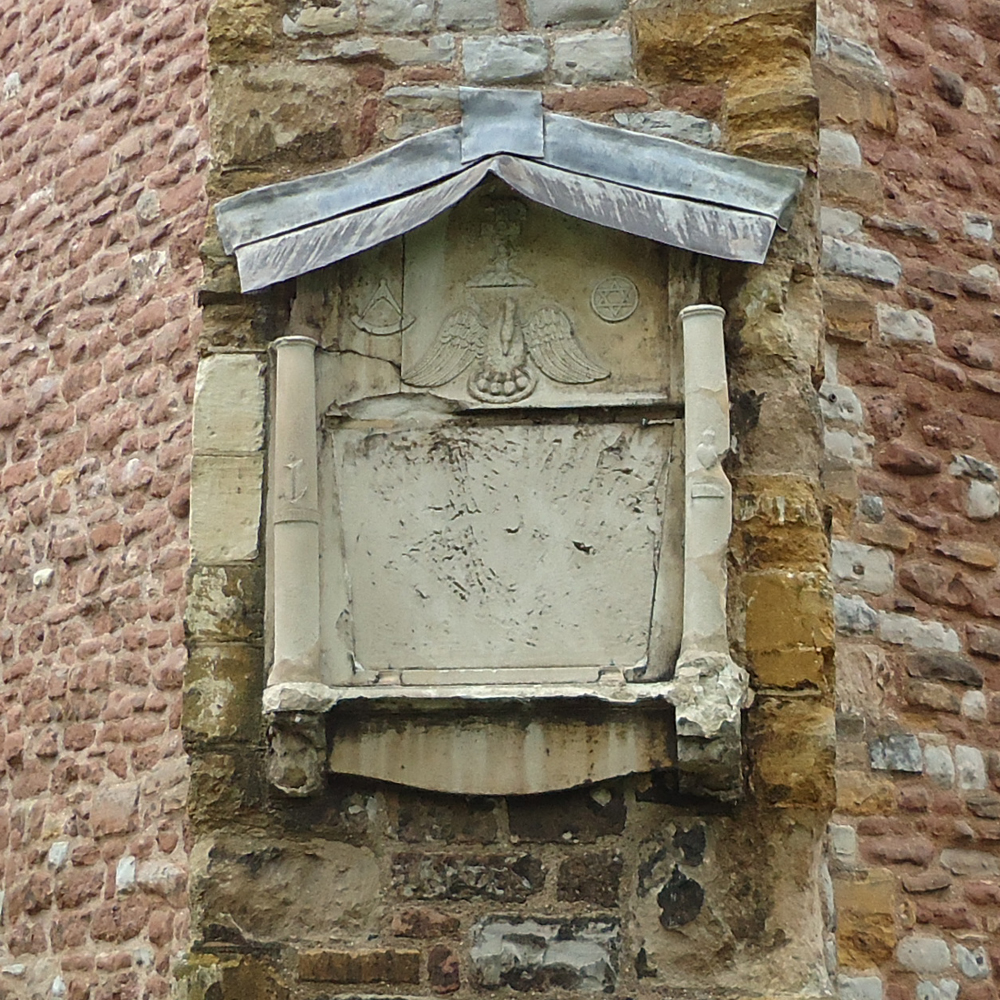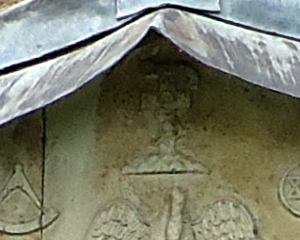
A Masonic memorial can be seen on the north-western buttress of the tower of St Mary’s church. This memorial is missing its inscription, and it must be assumed the plaque, possibly of marble and/or brass or bronze, fell off and was smashed. What does survive, however, is decoration and clearly show links with the Freemasons and with Christian symbolism. The style of the memorial is best described as Regency, probably dating to the early nineteenth century.
1) At either side the two pillars represent the Pillars of the of Boaz and Jachin, which stood in front of Solomon’s Temple, the first Temple in Jerusalem.
2) The one on the left has an anchor as described in Hebrews 6:19, saying:
We have this hope as an anchor for the soul, firm and secure. It enters the inner sanctuary behind the curtain.
3) The one on the right has a Sacred Heart.
4) In the centre is a representation of a pelican piercing its breast to feed its young with its own blood , known as a “Pelican in her Piety.” It can be found in illuminations, stone reliefs, gold jewels, paintings, stained glass windows and more, from the Middle Ages to the modern era. It is held to represent Self-Sacrifice. There is a C19 window in the N Transept with this imagery. In a masonic context this of the Rose Criox degree, one of the oldest rites of Freemasonry. There is an early fifteenth century corbel with this motif in the north aisle of St Mary’s Church.
4) To the left of it is a Compass and Sector, Architects tools. In Freemasonry this is of the Rose Criox degree.
5) To the right of it is a six-pointed star It could be a Star if David or a stylised Blazing Star, sometimes held to mean Prudence
6) At the top and obscured the lead flashing is a cruxifix with a rose turning up from the base. This can be taken as the Cross of Calvary of the Rose Croix, although in Freemasonry the turning rose signifies the Red Cross of Constantine degree.

The cross, anchor and heart together represents Faith, Hope and Charity, again symbols of the Rose Croix.
Given the urn-shape of the missing inscription plaque, suggesting funerary symbolism, this may be a memorial to commemorate a person. However, it might also, bearing in mind the location on the tower’s buttress, commemorate the rebuilding in 1815 of the top of the Spire, after being badly damaged by a lightning strike on 17 November 1813. This was commemorated by John Chubb’s portrait of Mr Came, the builder, where the scaffolding on the spire is shown in a window in the background.
The mystery of this memorial will only be resolved if some Archive material ever comes to light.
Tony Woolrich, 21/09/2020. With notes by Frank McGill and Norman Hucker
